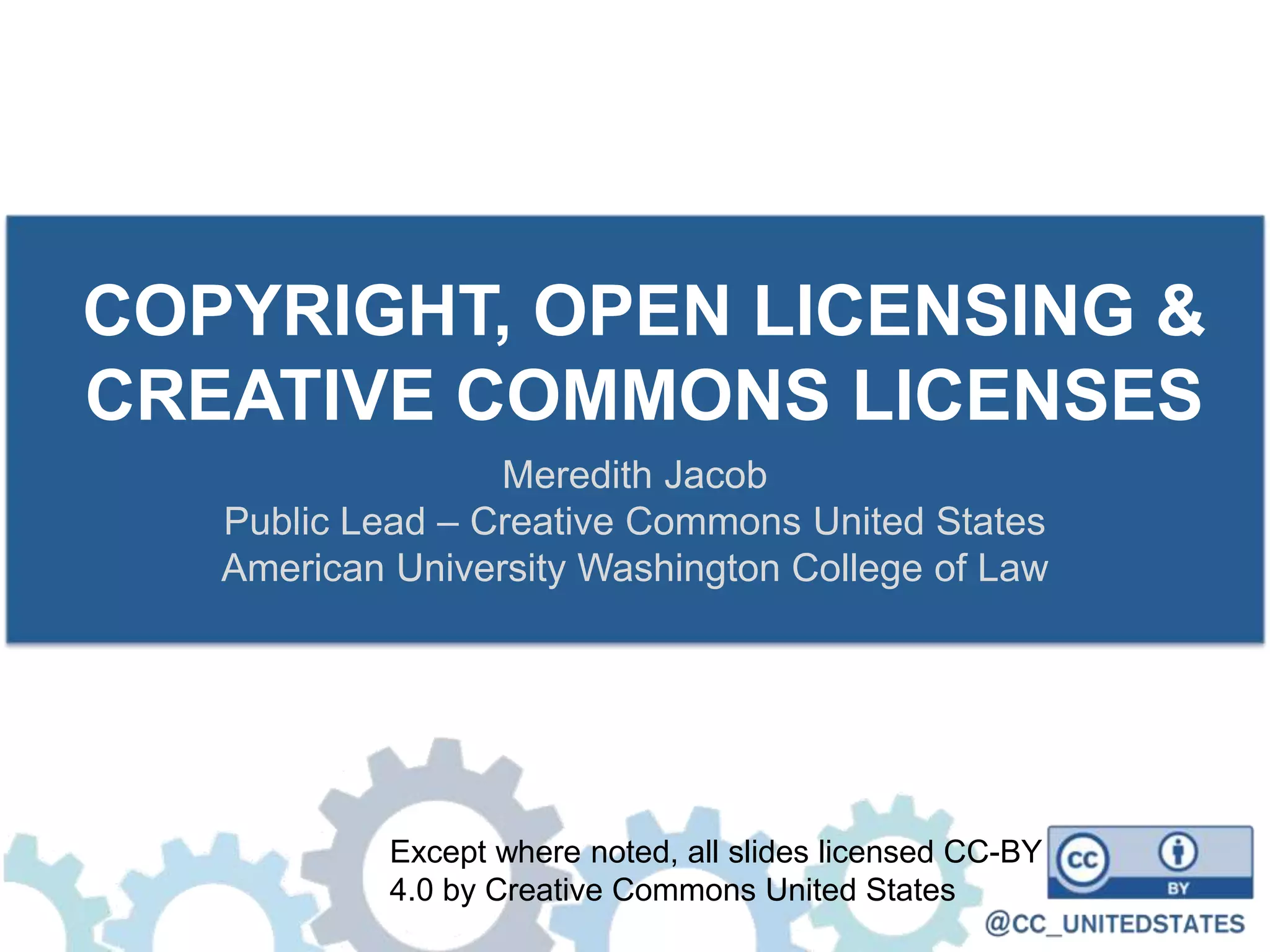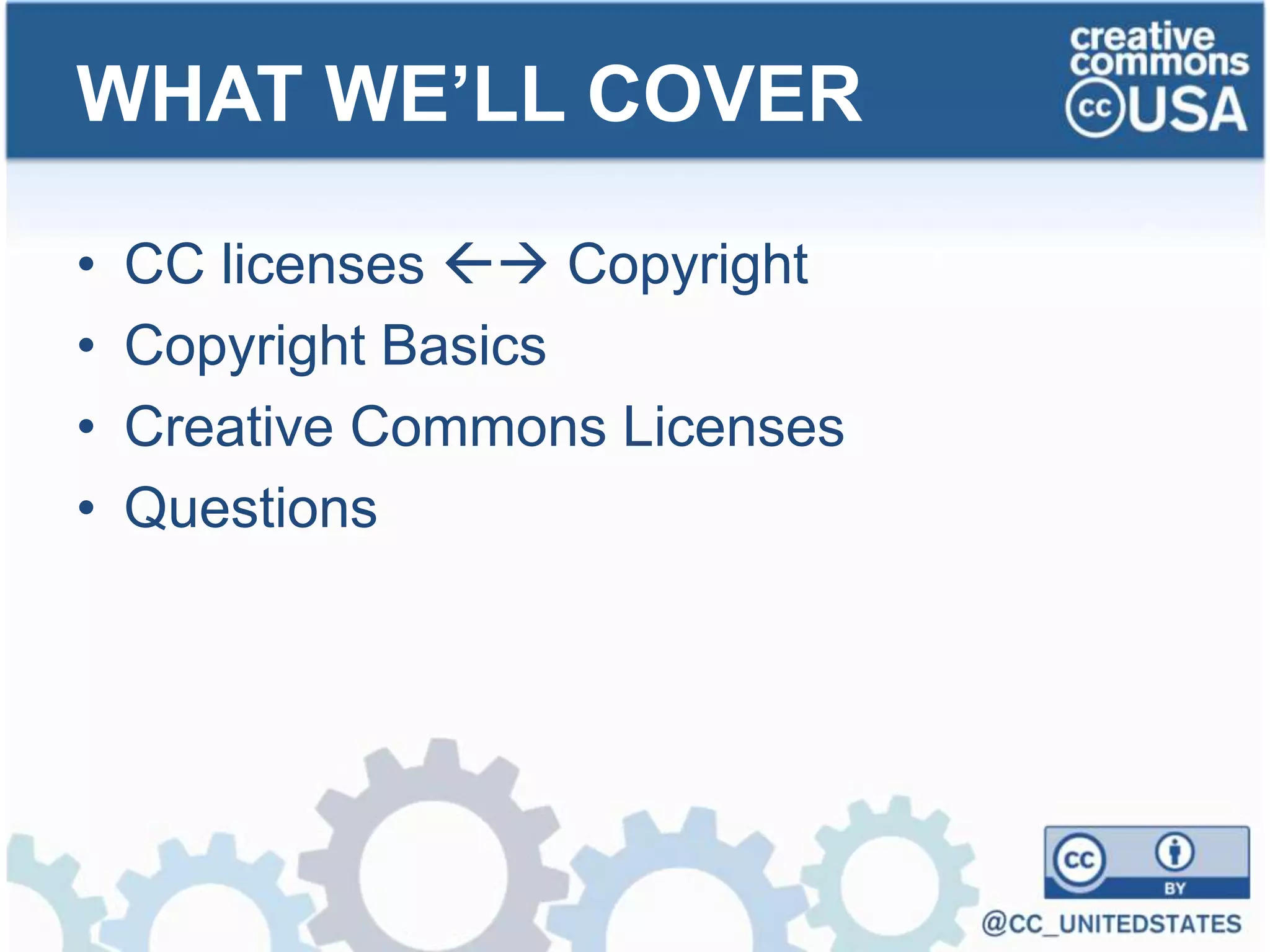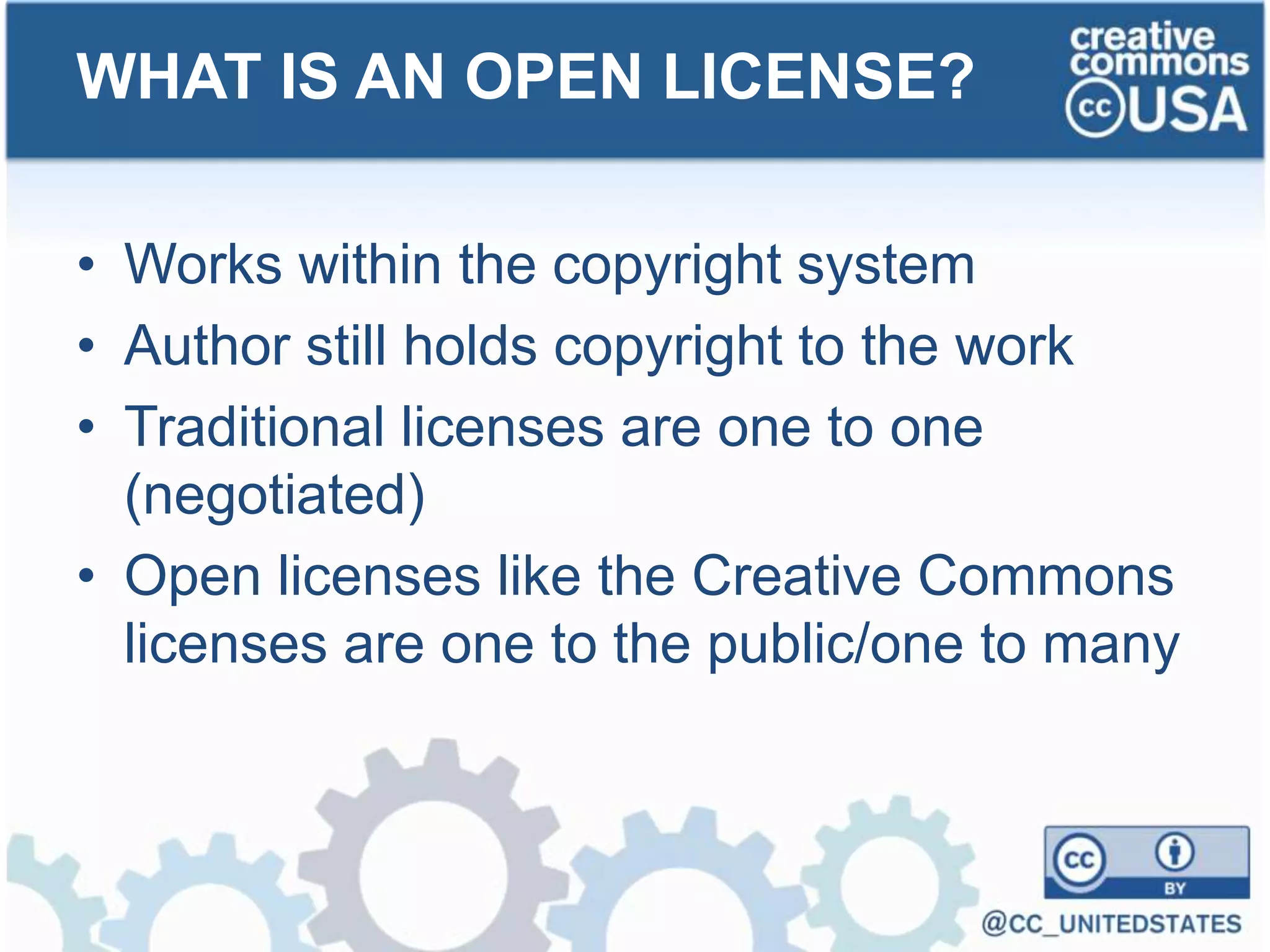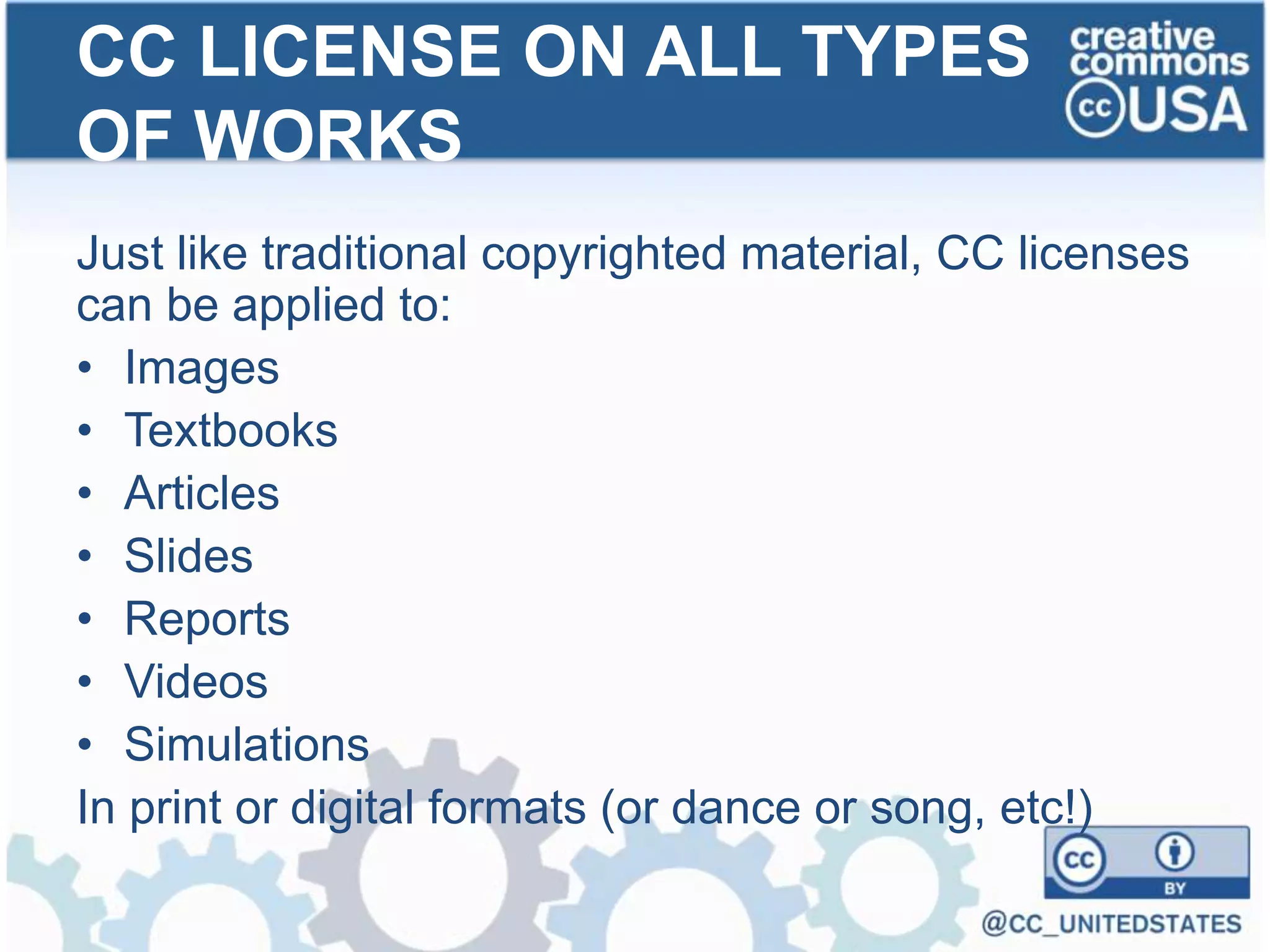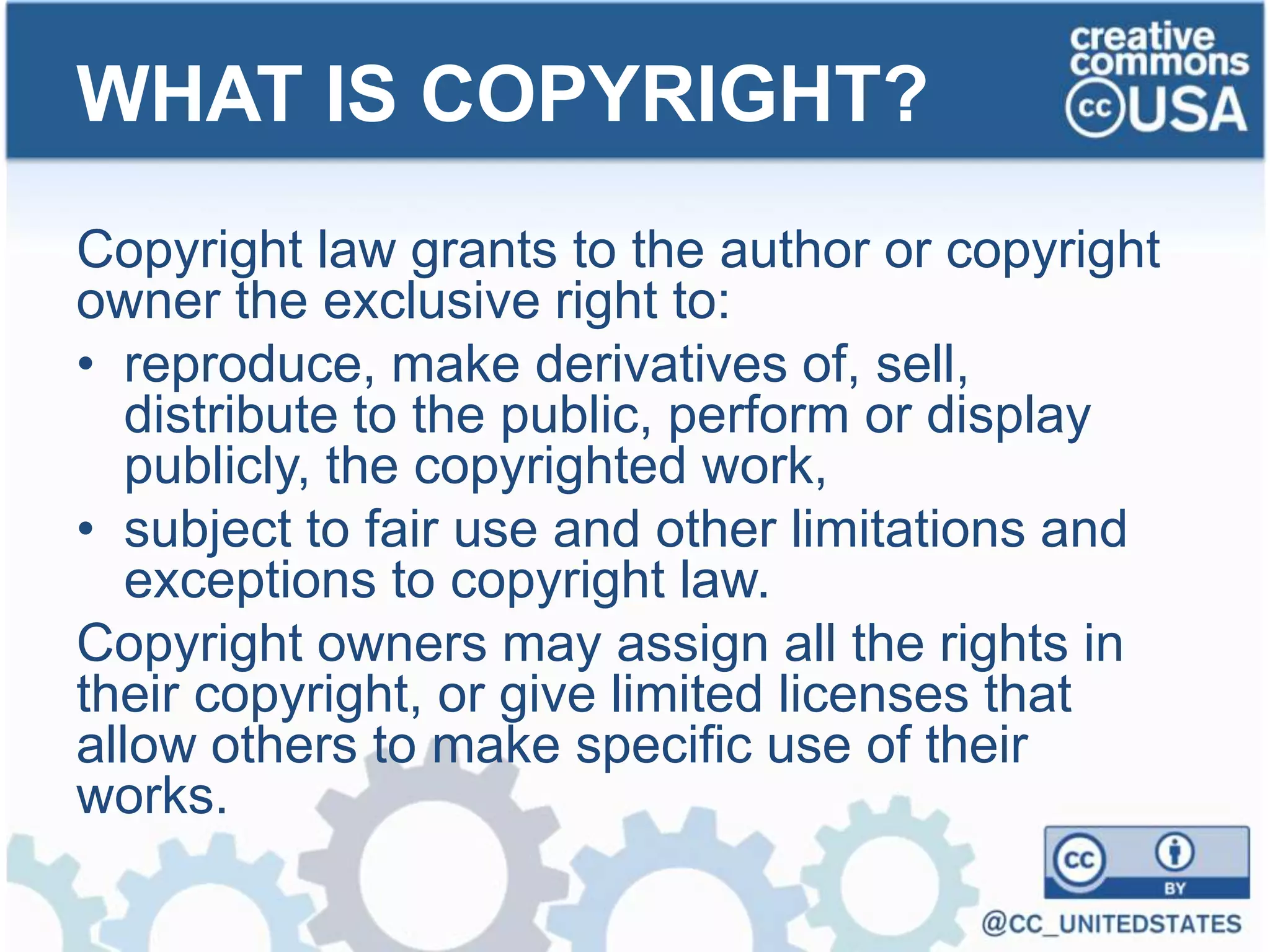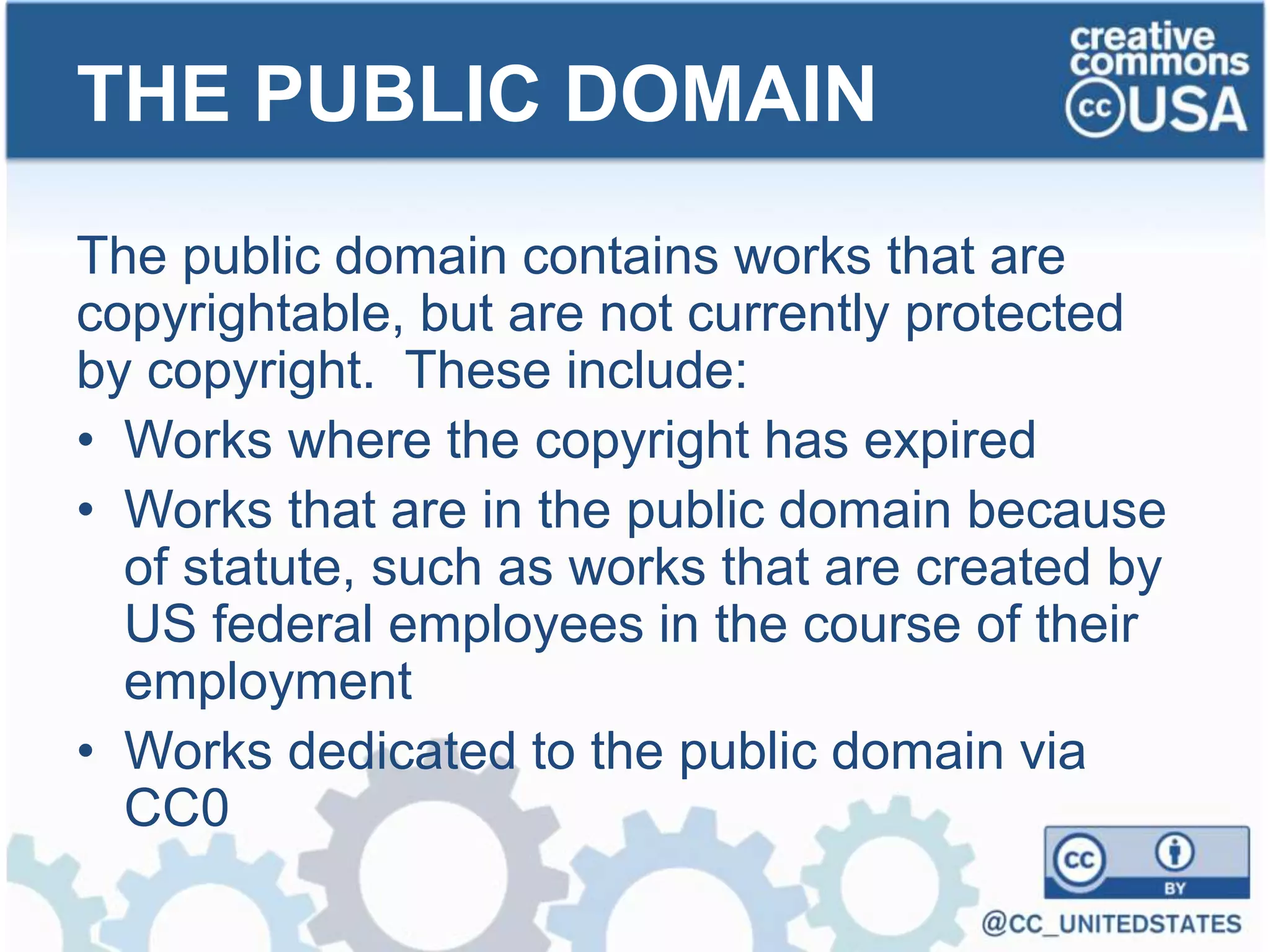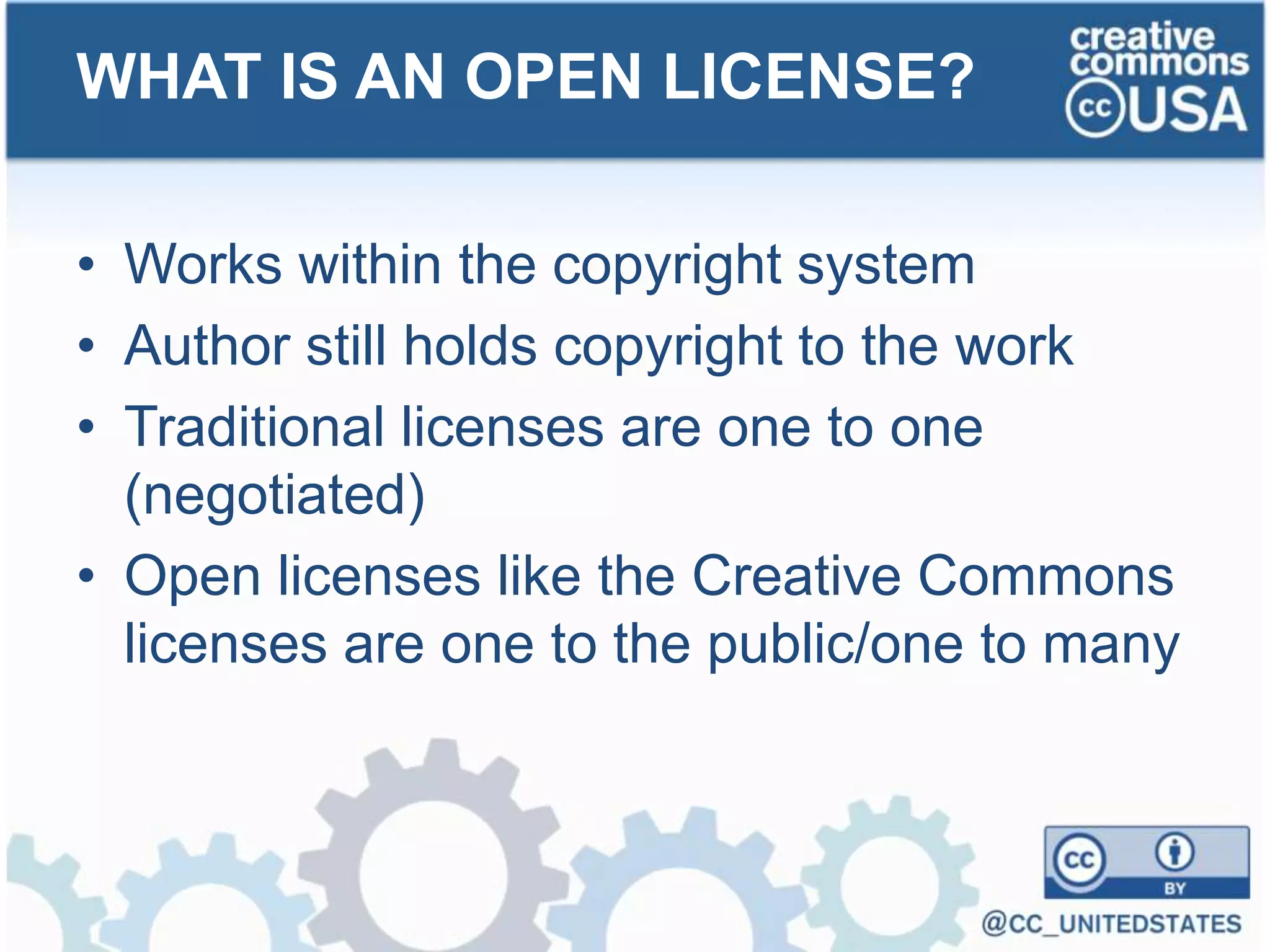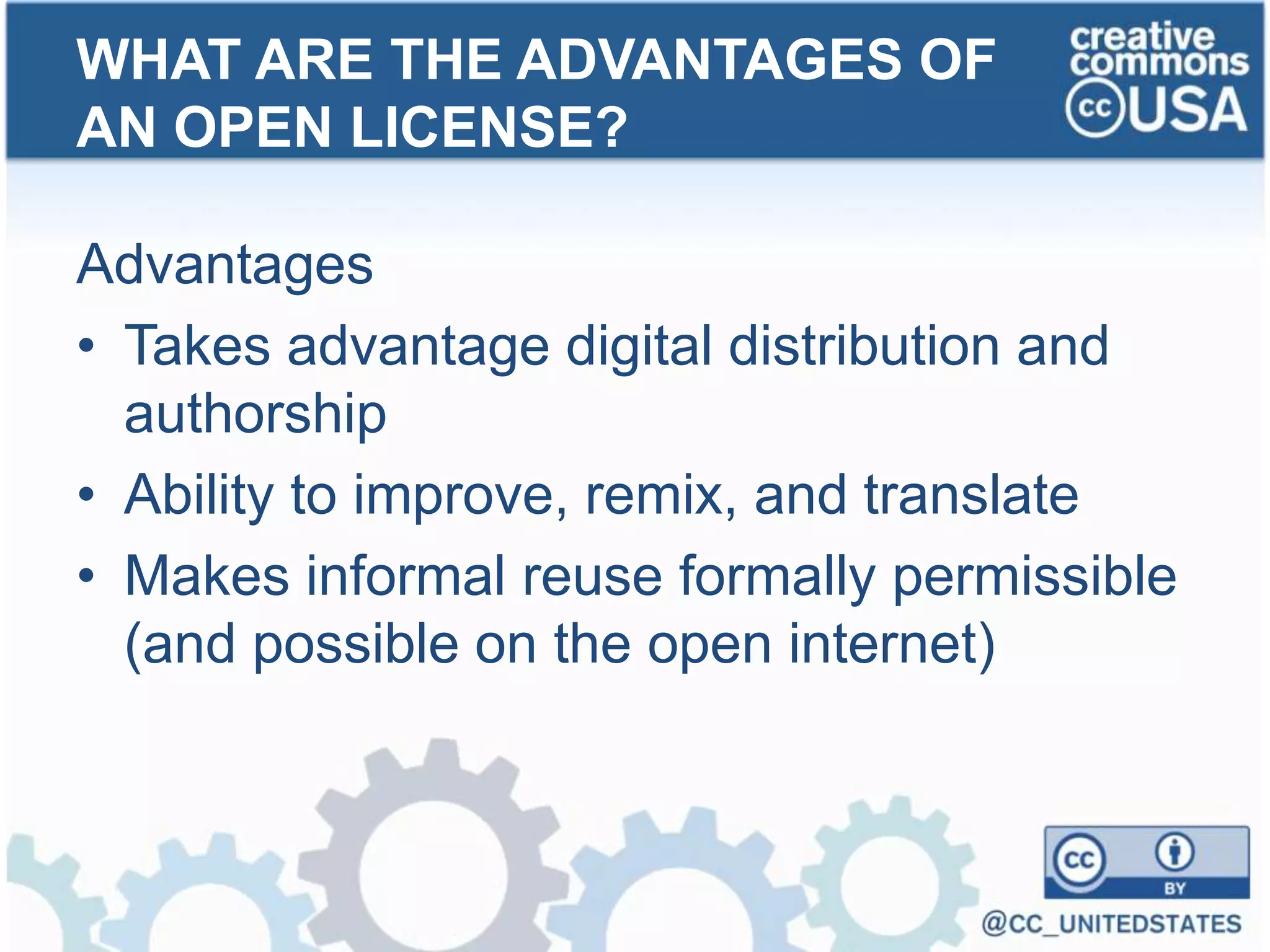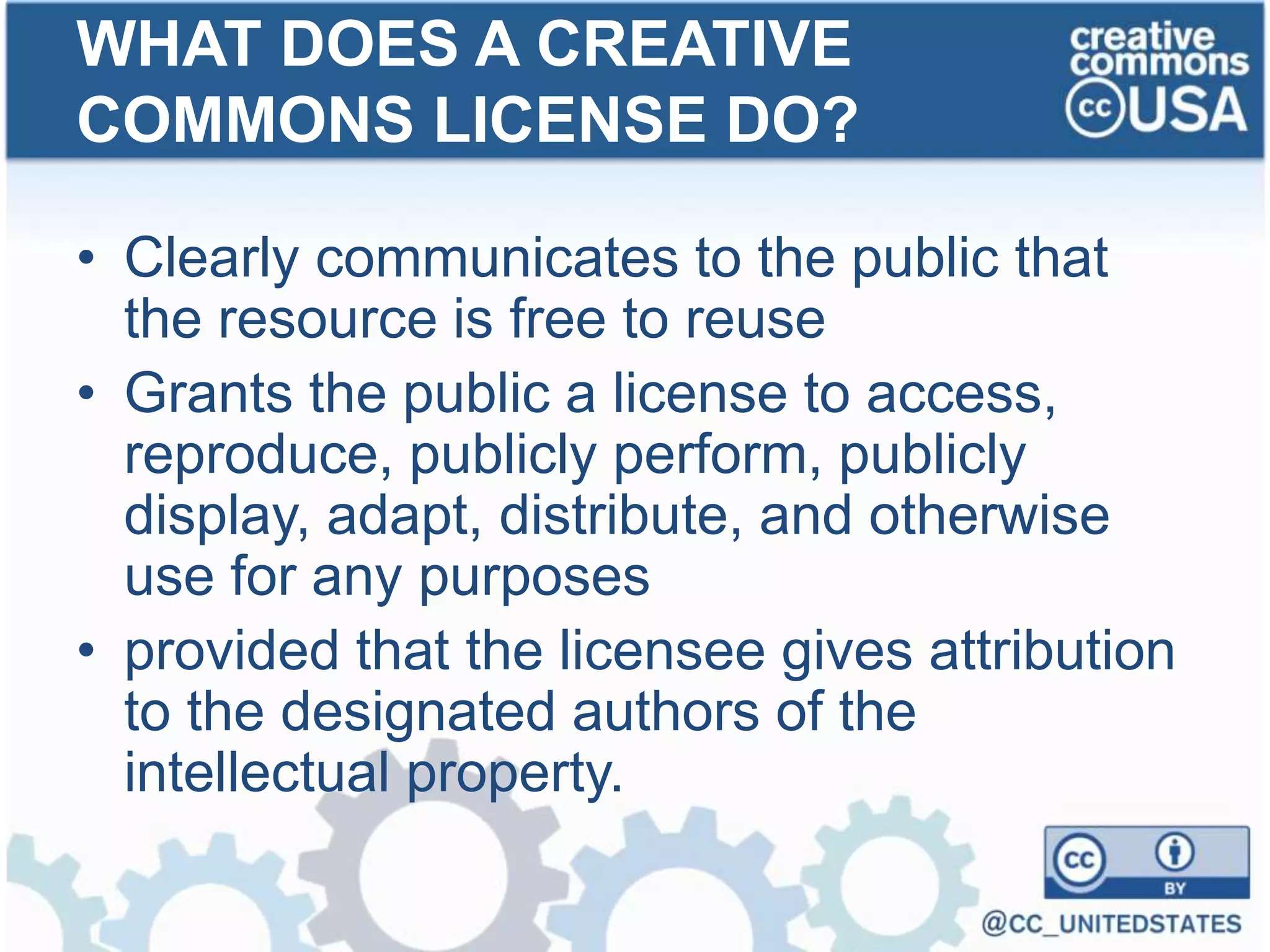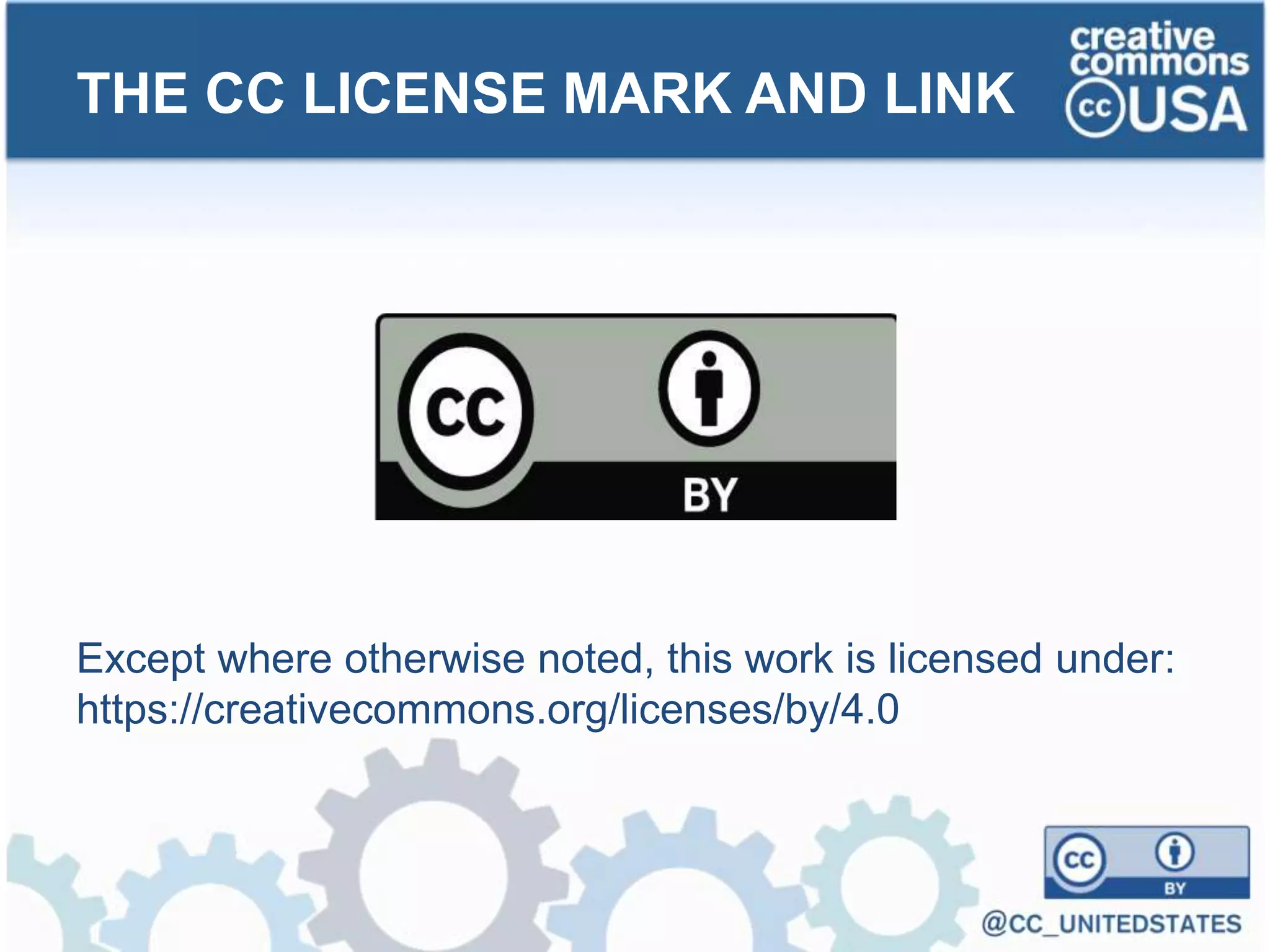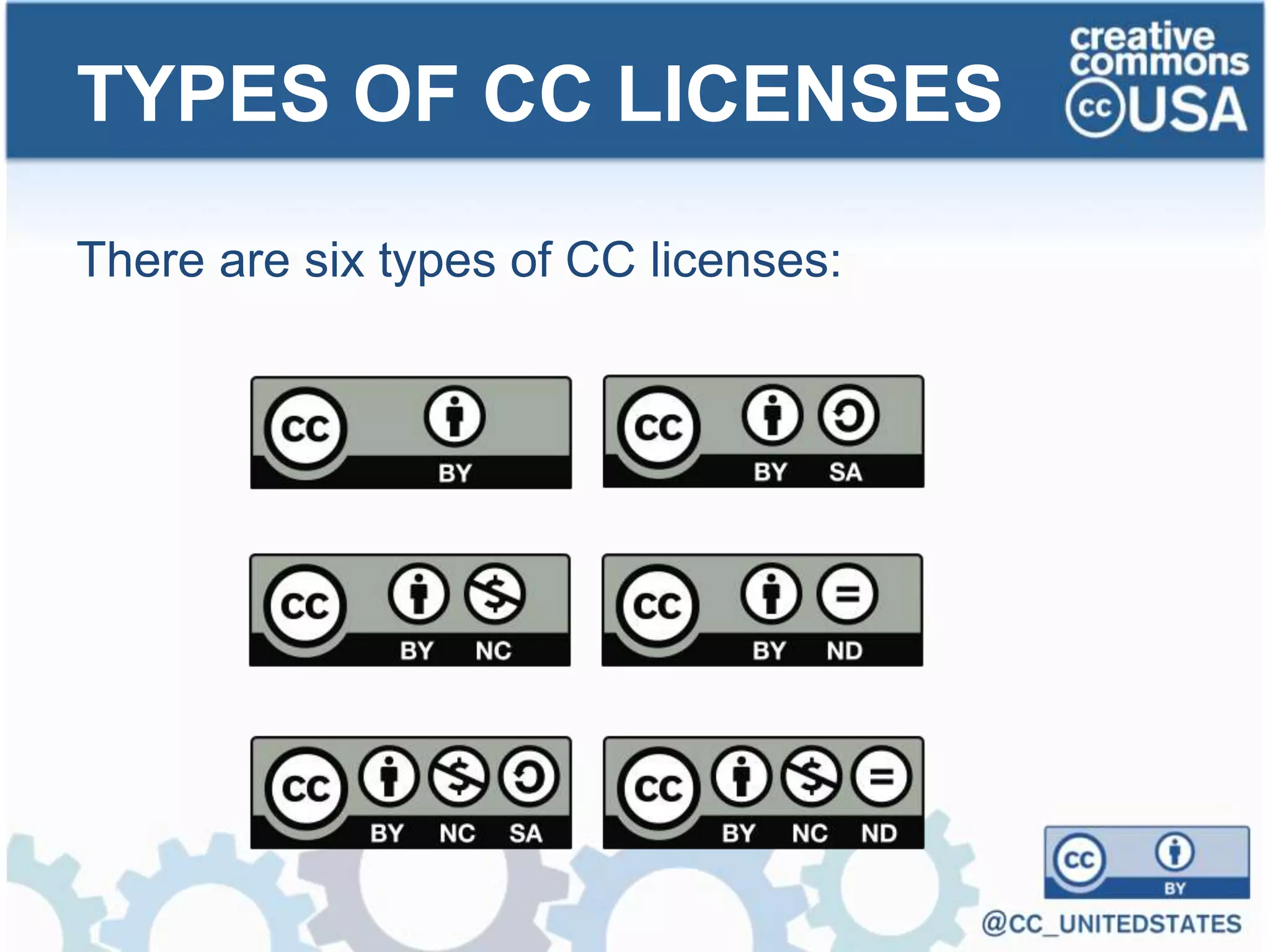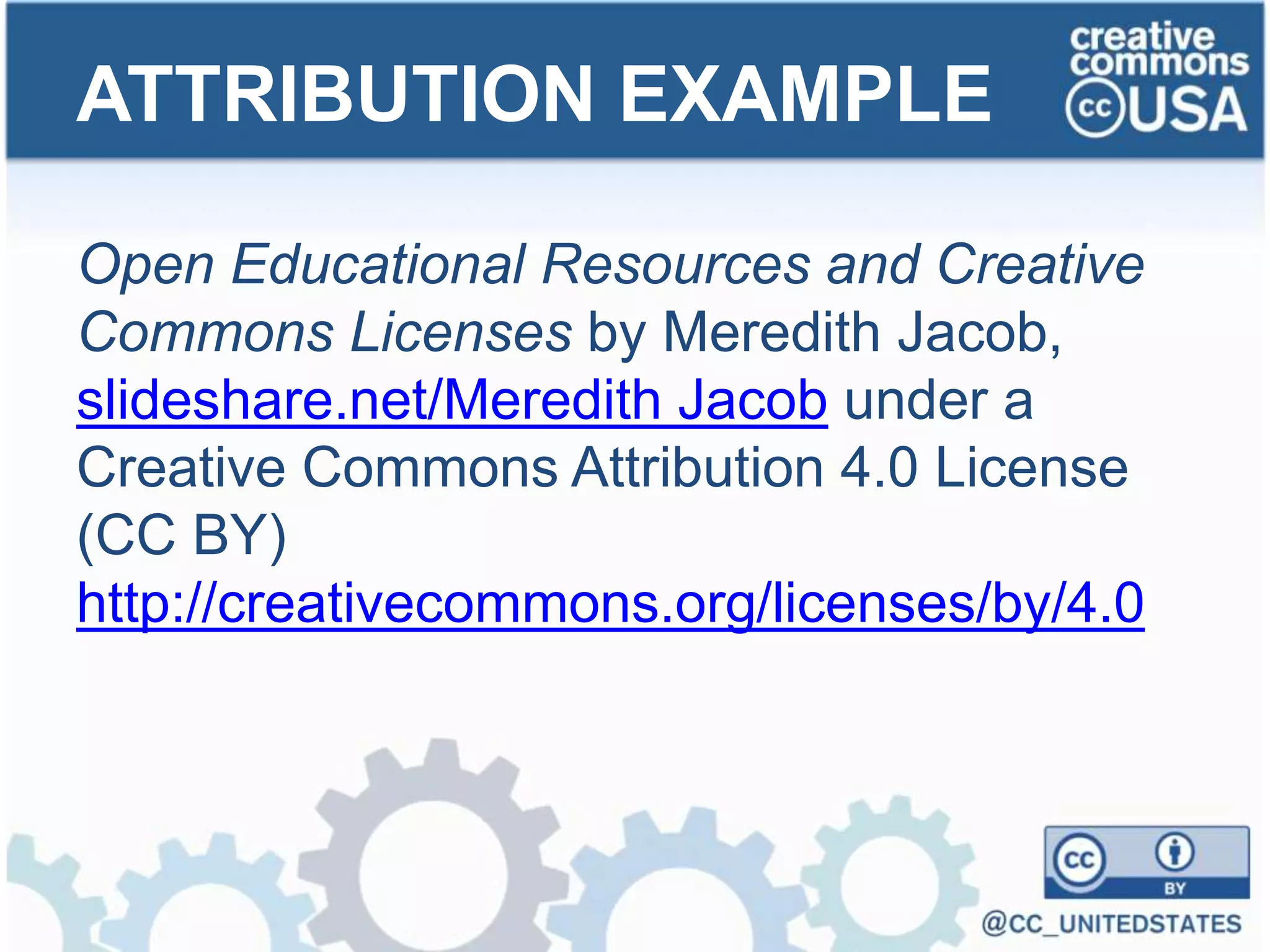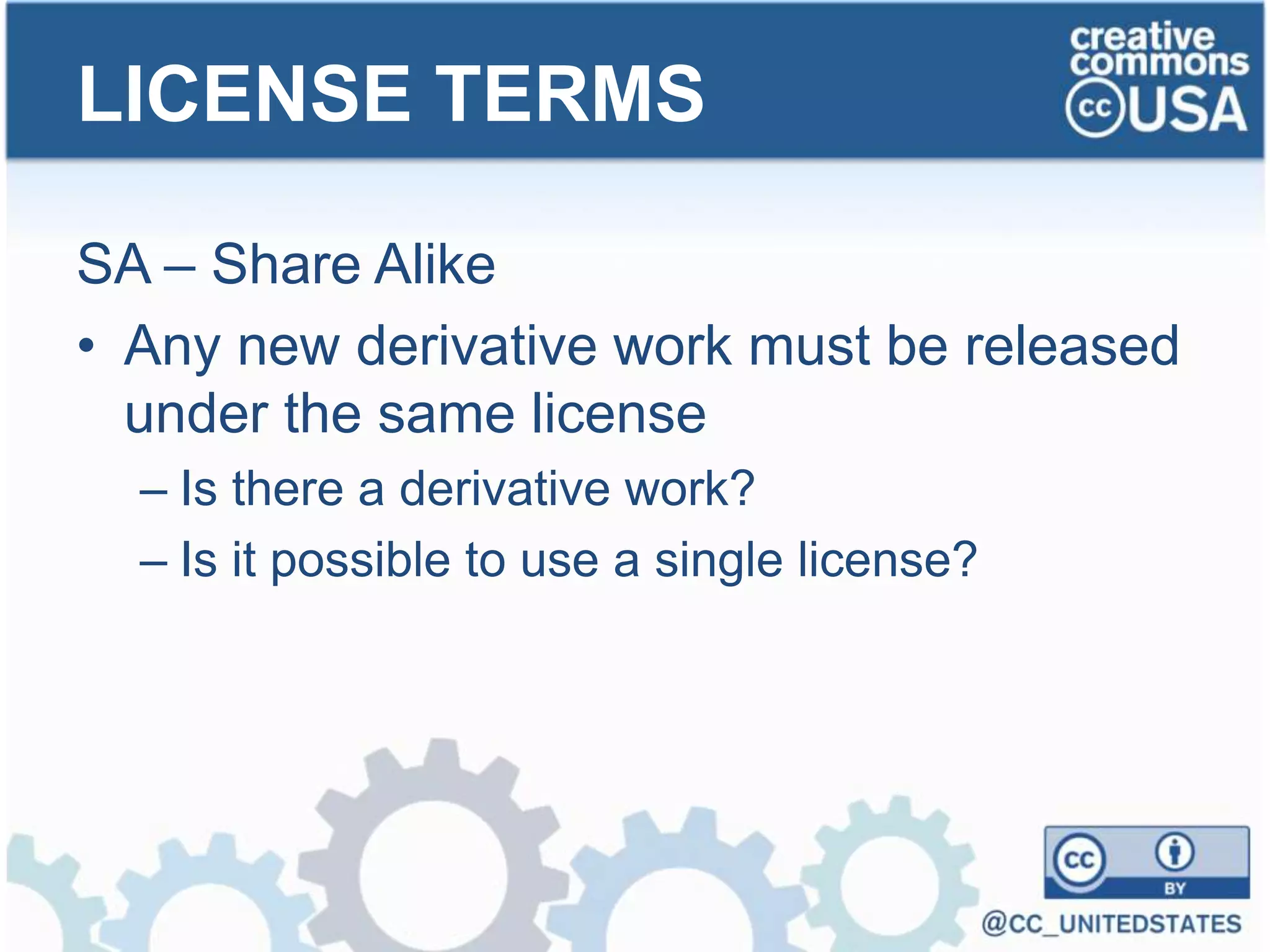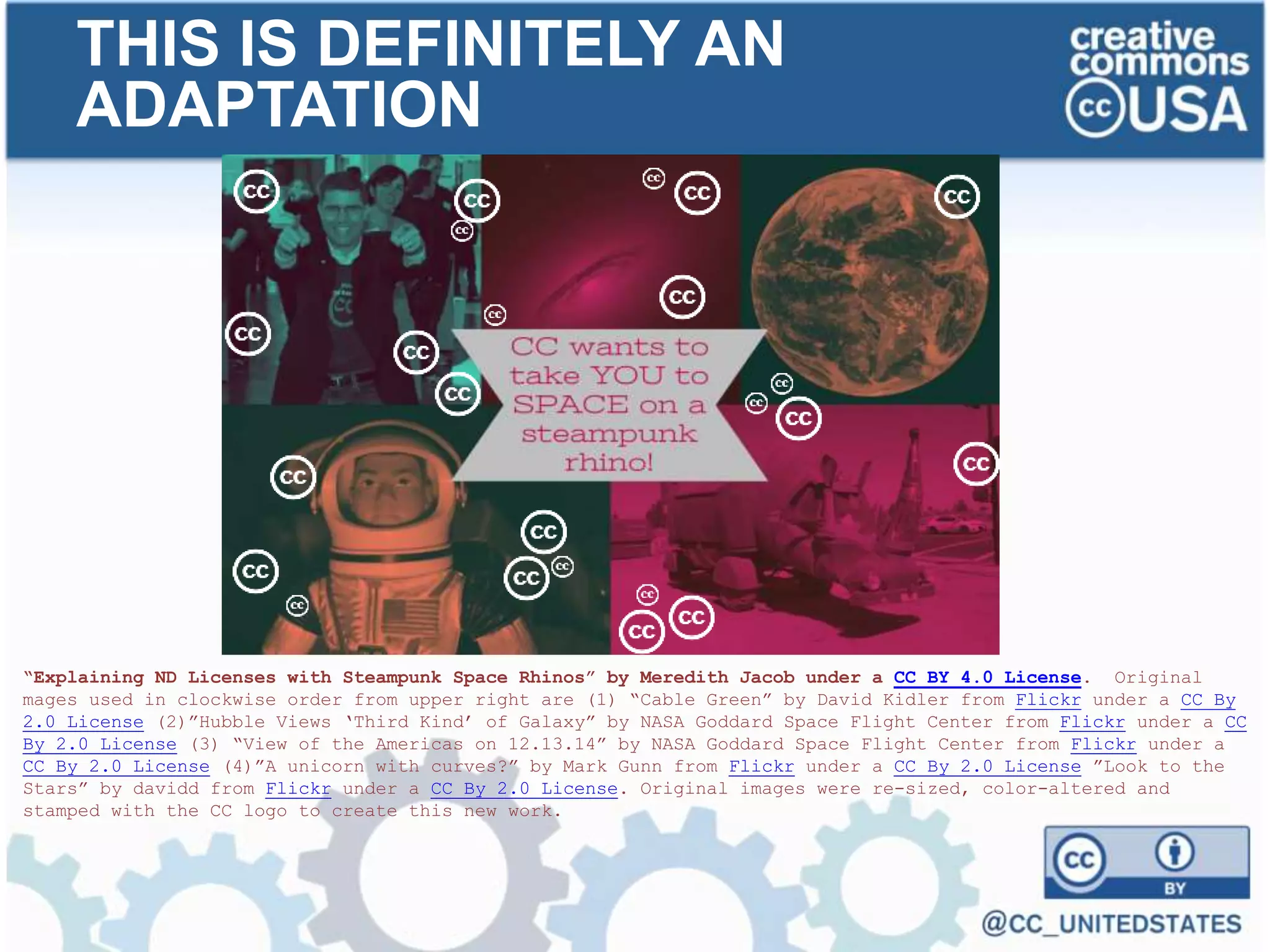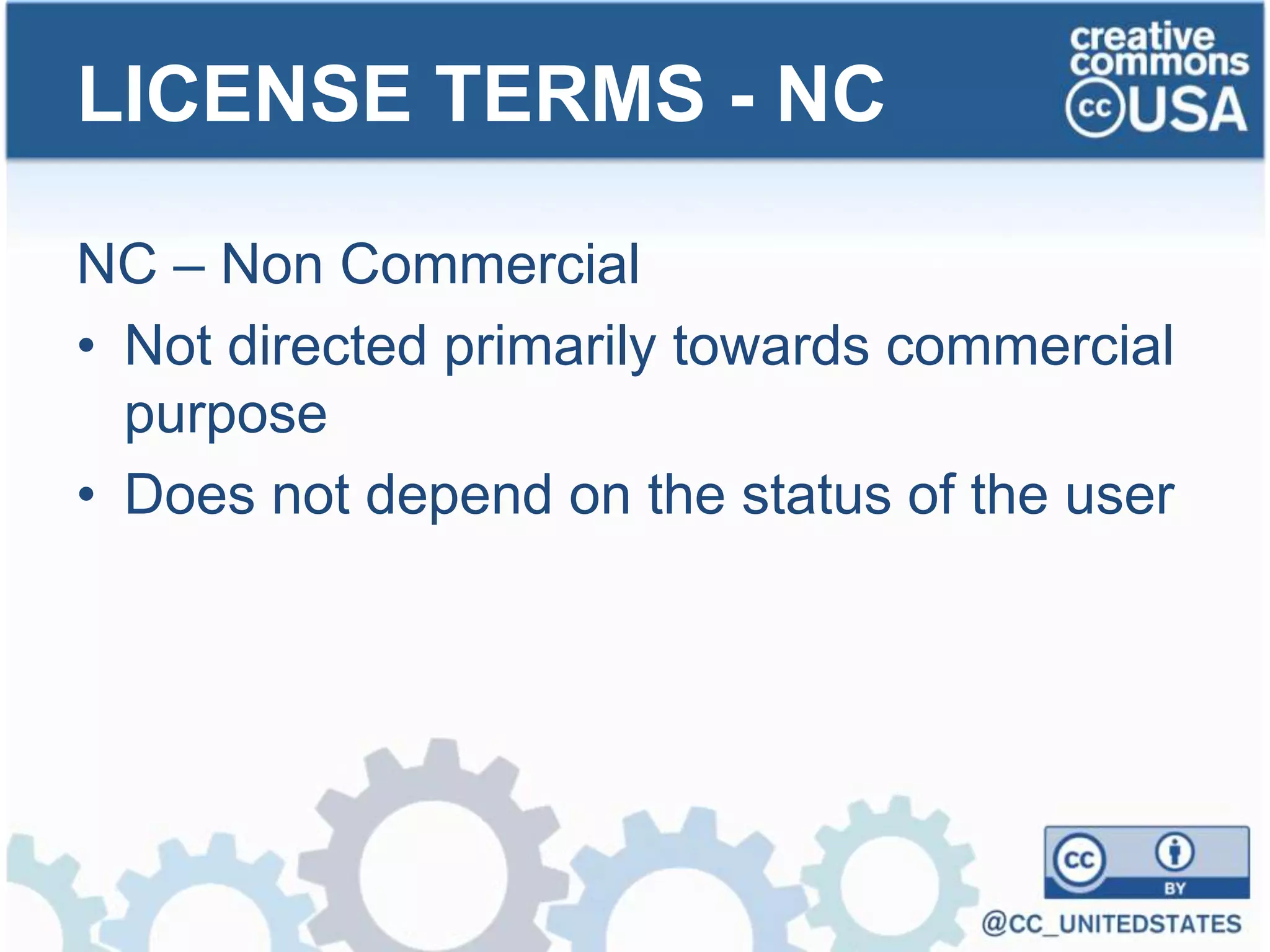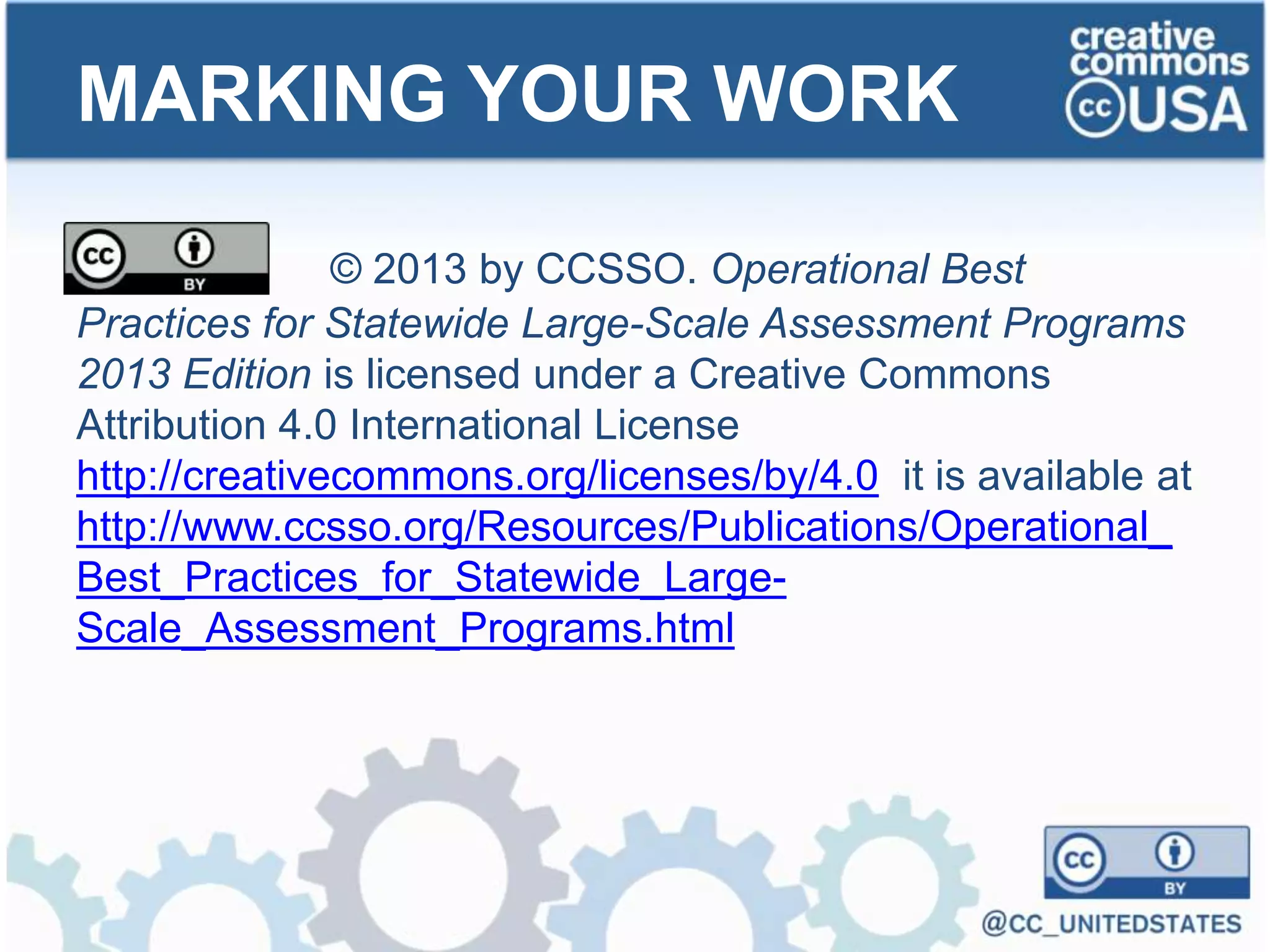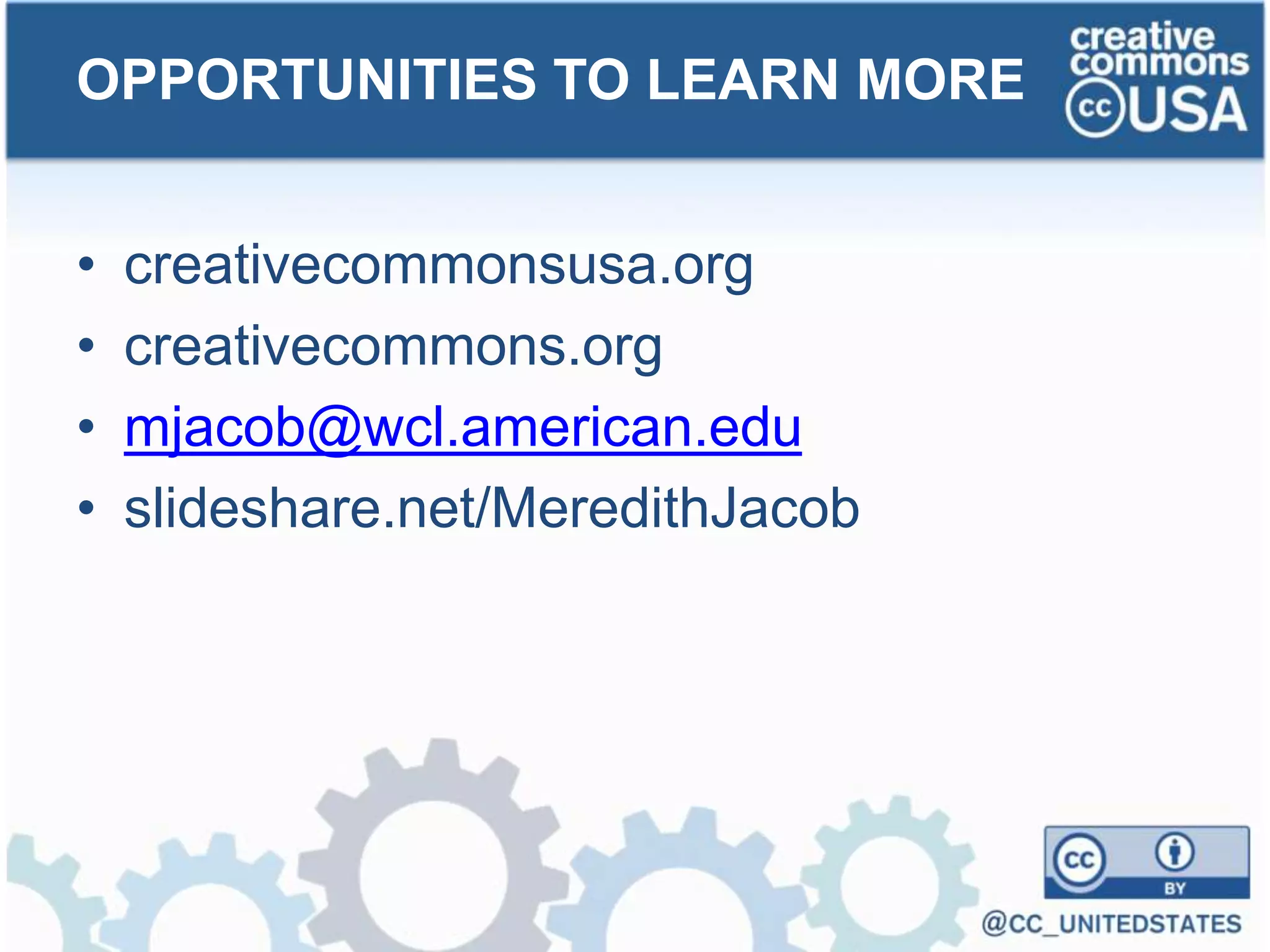- Creative Commons licenses provide an open alternative to traditional copyright licenses. They allow creators to retain copyright while giving people official permission to share and reuse their work.
- There are six main Creative Commons license types that vary in whether they allow commercial use, modifications, and require shared alike terms. Properly marking works with the correct Creative Commons license is important.
- Open licenses like Creative Commons benefit both creators and users by making informal sharing legally permissible and enabling others to build upon and redistribute creative works.
